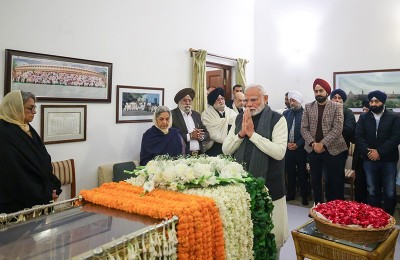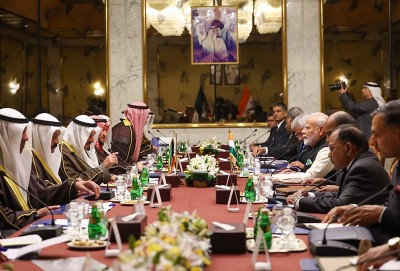 Pakistan Terrorism
Pakistan Terrorism
Permanent Crisis
At least 57 worshippers were killed and 197 injured on March 4, 2022, when a suicide attacker detonated himself inside an Imambargah (Shia place of worship), during Friday prayers, in the Koocha Risaldar area of Peshawar, the Provincial capital of Khyber Pakhtunkhwa (KP). Subsequently, the death toll increased to 62 as five of the injured died on March 5.
The lone attacker who was on foot had strapped at least six kilograms of explosives and was carrying a pistol. He first killed one of the police guards and then wounded another before entering the mosque’s main hall, where he detonated the explosives attached to his body. The Islamic State-Khorasan Province (IS-KP) claimed the attack and identified the bomber as Julaybib al-Kabuli, an Afghan national.
The worst previous attack was recorded on July 13, 2018, when at least 149 civilians were killed and 186 were injured by a suicide bomber who blew himself up targeting a political rally of the Balochistan Awami Party (BAP) at Dringarh village in the Mastung District of Balochistan. According to the bomb disposal squad, up to 15 kilograms of explosive material was used in the incident. The IS-KP and the ‘Ghazi force Lal Masjid’ wing of the Tehreek-i-Taliban Pakistan (TTP) separately claimed responsibility for the attack.
The July 13, 2018, attack was the worst since March 6, 2000, when South Asia Terrorism Portal (SATP) started compiling data on conflicts in Pakistan.
Meanwhile, according to the SATP database, overall terrorism-linked fatalities in Pakistan in 2021 increased to 663 [214 civilians, 226 Security Force (SF) personnel and 223 terrorists] from 506 (169 civilians, 178 SF personnel and 159 terrorists) in 2020, registering a 31.02 per cent rise. Overall fatalities had declined between 2015 and 2019. Year 2022 has already chalked up 230 fatalities (92 civilians, 64 SF personnel and 74 terrorists).
There were 267 incidents of killing in 2021, as compared to 193 in 2020. After declining for seven consecutive years between 2013 and 2019, incidents of killing had increased in 2020. 88 of these were major incidents (each resulting in three or more fatalities) in which 417 persons were killed (140 civilians, 113 SF personnel and 164 terrorists) in 2021. There were 53 major attacks (317 fatalities: 87 civilians, 114 SF personnel and 116 terrorists) in 2020. After registering a decline for five consecutive years between 2015 and 2019, the number major incidents increased in 2020.
Pakistan also recorded 110 incidents of explosion in 2021 as against 81 in 2020. Incidents of explosion had declined between 2012 and 2019.
Among the principal reasons for this spike is the resurgence of the Tehreek-e-Taliban Pakistan (TTP) in 2020 and thereafter. After its formation in December 2007, TTP had created mayhem in Pakistan between 2008 and 2014, before the Pakistan military launched Operation Zarb-e-Azb [Sword of the Prophet] in the aftermath of the attack on Karachi Airport on June 8-9, 2014, in which at least 33 persons, including all ten attackers, were killed. As soon as the operation was launched, most TTP cadres left Pakistani territory and took shelter inside Afghanistan. Operation Zarb-e-Azb lasted till February 22, 2017. It was followed by Operation Radd-ul-Fasaad (Elimination of Discord), launched by the Pakistan Army across the country on February 22, 2017. This latter operation is still ongoing. Both these operations helped the SFs keep the TTP under check. However, the Doha deal of February 29, 2020, between the United State (US) and the Taliban more or less assured the Taliban’s dominance in Afghanistan and emboldened TTP, given the close ties between the two outfits. Unsurprisingly, in July 2020, TTP ‘chief’ Noor Wali Mehsud articulated his group’s new vision of separating the ex-FATA (Federally Administered Tribal Areas) region, which is now merged with KP, from Pakistan, through a jihadist struggle and to create a Sharia-ruled state there. TTP’s new rhetoric is consistent with the Afghan Taliban’s position of refusing to recognize the Durand Line as a legal border and opposing its fencing by Pakistan, because it has divided the Pashtun tribes.
In August 2020, TTP reabsorbed various splinter factions: the Hakimullah Mehsud Group, Jamaat-ul-Ahrar, and Hizb-ul-Ahrar. Further, the Saifullah Kurd faction of Lashkar-e-Jhangvi (LeJ), under the leadership of Khushi Muhammad; and the Al-Qaeda in the Indian Sub-continent (AQIS) factions of Amjad Farooqi and Ustad Ahmad Farooq, also merged with TTP. TTP’s activities gained further momentum after the Taliban took over Kabul (Afghanistan) on August 15, 2021. Though the Federal Government is currently trying to buy an improbable peace with the TTP, it is highly unlikely that the group will reciprocate to the government’s overtures.
Baloch insurgent groups have also intensified their anti-Pakistan movement, contributing to this overall spike. According to SATP data, overall fatalities in Balochistan increased from 215 in 2020 to 311 in 2021, up by 44.65 per cent. Overall fatalities were at a 15-year low of 180 in 2019.
The ‘freedom movement’ in Sindh, which of late has received support from armed groups operating in Sindh and Balochistan, is also likely to get more violent. The prominent groups in Sindh include Sindhudesh Revolutionary Army (SRA) and Sindhudesh Liberation Army (SLA).
While other domestically oriented groups remained more or less quiescent, IS-KP continues to spread its influence and the March 4, 2022, incident testifies to this. The vacuum created due to the ‘absence’ of the TTP at the ‘centerstage’ for some time was exploited by IS-KP. Between 2015 and 2022, the group claimed/or was attributed 388 civilian killings. Indeed, on January 20, 2022, KP Police Chief Moazzam Jah Ansari asserted, “I see IS-K [IS-KP] as a bigger threat to peace and security in the province compared to the TTP in the near future.”
Moreover, there is a surge in the activities of religious radical/fundamentalist groups that are creating urgent challenges, exploiting Islamabad’s inherent weaknesses in dealing with such groups. Prominently, the Tehreek-i-Labbaik Pakistan (TLP) continued with its series of violent mass protests through 2021, disrupting day-to-day peace. At least 61 persons (52 civilians and nine policemen) were killed in TLP-linked violence in 2021. The Government’s abject surrender before the group in 2021 has further emboldened both TLP and other such groups to escalate their disruptive activities. Among several demands of the TLP which the government accepted, was the approval of the proposal to revoke TLP proscription by the Prime Minister Imran Khan on November 5, 2021. On November 7, 2021, the Federal Interior Ministry issued the notification regarding revocation of the ban. Further, on November 10, the Punjab Government removed TLP chief Hafiz Saad Hussain Rizvi's name from the Fourth Schedule — a list of proscribed individuals who are suspected of terrorism or sectarian violence under the Anti-Terrorism Act (ATA), 1997. Finally, the Government completely surrendered to TLP violence and intimidation, releasing Rizvi from the Kot Lakhpat Jail in Lahore on November 18. Hafiz Saad Hussain Rizvi, the son of TLP’s late founder Khadim Rizvi, had been under the Punjab Government’s detention since April 12, 2021, under the ATA provisions for the “maintenance of public order." He was detained for issuing a video message on April 11, 2021, mobilising TLP workers to prepare for a protest march against the Government and inciting his followers to violence.
Despite this rising graph of violence and deepening influence of the radical/fundamentalist groups, the Pakistan government continues to discriminate between ‘good terrorists and bad terrorists,’ with the deep state continuing with its export of terrorism, particularly through India-centric terrorist groups like the Lashkar-e-Taiba (LeT), Jaish-e-Mohammad (JeM) and Hizb-ul-Mujahidin (HM), among a host of lesser formations. Not surprisingly, the Financial Action Task Force (FATF), during its Plenary held on March 2-4, 2022, decided to retain Pakistan in its listing of Jurisdictions Under Increased Monitoring – the ‘grey list’ – along with 22 other countries. Pakistan has been on the ‘grey list’ since June 2018.
With both the TTP and IS-KP escalating activities and consolidating strength, and the Baloch groups intensifying their anti-Pakistan movement and lending support to the insurgent ‘freedom movement’ in Sindh, violence in Pakistan is likely to escalate further. The establishment is yet to abandon its dirty game of using terrorism as a strategic tool, the country is awash with weapons, and the ambivalence of the Taliban administration in Afghanistan, ceding operational spaces to anti-Pakistan terrorist formations, can only combine to further undermine the security situation, even as strains between Islamabad and Rawalpindi place the country in a state of permanent political crisis.
Support Our Journalism
We cannot do without you.. your contribution supports unbiased journalism
IBNS is not driven by any ism- not wokeism, not racism, not skewed secularism, not hyper right-wing or left liberal ideals, nor by any hardline religious beliefs or hyper nationalism. We want to serve you good old objective news, as they are. We do not judge or preach. We let people decide for themselves. We only try to present factual and well-sourced news.







